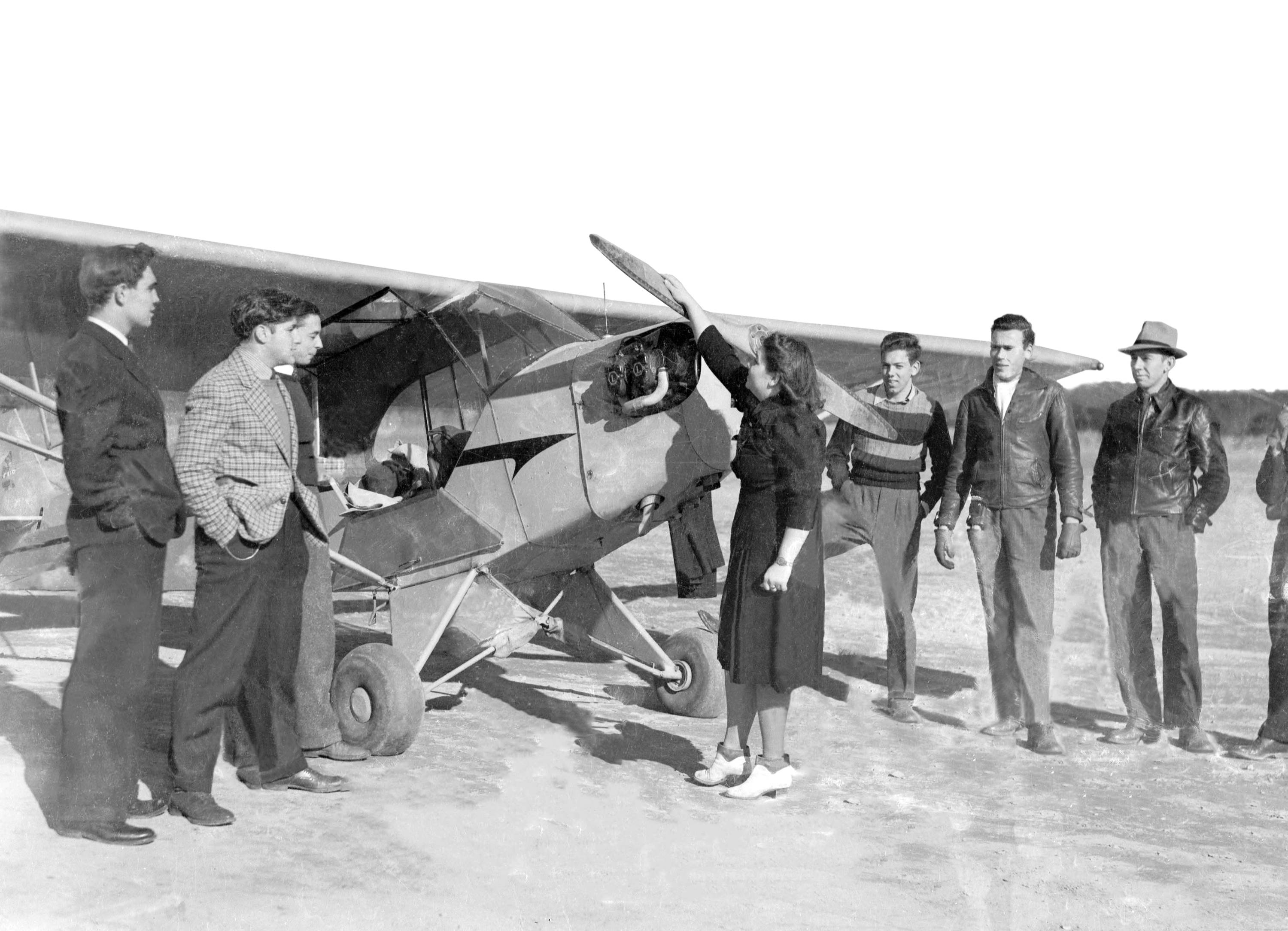A look at Elon’s civilian aviation program during World War II
As Elon College confronted the challenges of operating during wartime, students joined a new aviation training program to meet the growing need for trained pilots.
Throughout the course of World War II, many universities enacted changes in their curriculum to meet the country’s pressing needs. In 1939, Elon College received approval from the Civil Aeronautics Authority to offer a Civilian Pilot Training Program. Amid the ongoing war in Europe and the Pacific, the course appealed to students looking to enroll in Army or Navy flight-training programs.
The program was directed by Alonzo Hook, Class of 1913, who was the chair of the college’s physics department from 1922 to 1957. Many of Hook’s courses had pragmatic appeal and served the physical needs of the college, and the Civilian Pilot Program positioned Elon College as a key player in meeting the escalating demand for trained pilots during wartime.
Up to 20 students were enrolled each semester, and the selection process was thorough. The Board of Selection for the program consisted of representatives from the Civil Aeronautics Authority, the flight contractor and the college. The applicants had to be between the ages of 19 and 26, and among the 20 pilot candidates chosen each year, three were women. The future pilots also had to pass a vision test and pledge to continue military service, if qualified.
The enrollment cost for the course was $25 and the students received four hours of credit for the one-semester class. The program covered topics such as civil air regulations, meteorology, navigation and airplane operation. During the final phase of the program, students would undergo 18 hours of hands-on flight training to learn how to operate different types of aircraft. This phase included mastering take-offs, landings, aerial maneuvers and emergency procedures. Hook instructed the required ground phase of the Civil Aeronautics course on Elon’s campus. Additionally, he coordinated with licensed instructors to conduct the flying phase at the privately operated Huffman Field in Burlington.
By utilizing educational institutions for pilot training, the military could efficiently and rapidly produce a large number of aviators. This collaboration between Elon College and the military was a vital component in meeting the wartime aviation requirements and contributed significantly to the overall success of the United States during World War II.
Approximately 75 students completed the course before it was discontinued after the United States entered the war. Following the war, Hook reinstated the aeronautics course for students and residents who wished to obtain a private pilot’s license. The Civilian Pilot Training Program not only addressed the demand for trained pilots, but also reflected the institution’s commitment to a hands-on education with practical appeal.



